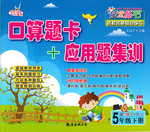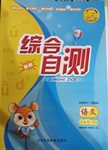题目内容
A little boy wanted to meet God. He thought it was a long trip to where God lived, _______ he packed his suitcase with lots of food and drinks and he started his_________
When he had gone about three blocks, he _______an elderly man. The boy sat down next to him and ________his suitcase. He was about to take a drink when he noticed that the man looked _______, so he offered him a drink.
The man________it and smiled at the boy. His smile was so pleasant that the boy wanted to see it again, so he ________him another one.
The man ________smiled at him. They sat there all afternoon eating and smiling, but they never said a word.
As it grew dark, the boy ________it was time to leave, but before he had gone more than a few steps, he______, ran back to the man, and gave him a hug. The man________him his biggest smile ever.
When the boy_______home a short time later, his mother was surprised by the look of ________on his face. She asked him what made him so happy.
He replied, “I had lunch with God, and God’s got the most beautiful ________I’ve ever seen!”
Meanwhile, the elderly man returned to his home. His son was________by the look of joy on his face and asked him the ________question as the little boy’s mother. The elderly man replied, “I ate and drank in the park with God.” However, he _______, before his son responded, “You know, he’s much _________ than I expected.”
Too often we underestimate the_______of a touch, a smile, a kind word, all of which have the potential to turn a life around. We should treat the people we meet________; they come into our lives for a reason. Embrace all equally!
1.A. if B. so C. but D. or
2.A. work B. study C. journey D. exploration
3.A. came across B. picked up C. learned from D. took away
4.A. hid B. opened C. examined D. ignored
5.A. worried B. anxious C. thirsty D. tired
6.A. refused B. avoided C. received D. accepted
7.A. lent B. bought C. made D. offered
8.A. again B. still C. only D. just
9.A. imagined B. realized C. announced D. pretended
10.A. played around B. sat around C. turned around D. got around
11.A. gave B. promised C. supplied D. begged
12.A. left B. called C. missed D. returned
13.A. joy B. confidence C. disappointment D. horror
14.A. drink B. food C. face D. smile
15.A. sad B. nervous C. amazed D. excited
16.A. same B. strange C. unique D. unusual
17.A. replied B. added C. reminded D. thought
18.A. braver B. shorter C. younger D. cleverer
19.A. power B. quality C. favor D. difficulty
20.A. differently B. proudly C. calmly D. kindly
 口算题卡加应用题集训系列答案
口算题卡加应用题集训系列答案 综合自测系列答案
综合自测系列答案

 At such an old age, she is no longer popular.
At such an old age, she is no longer popular.